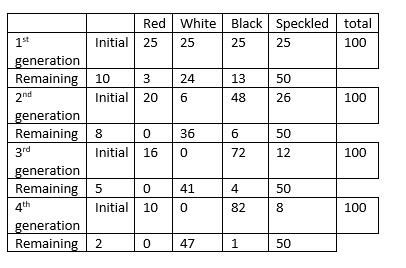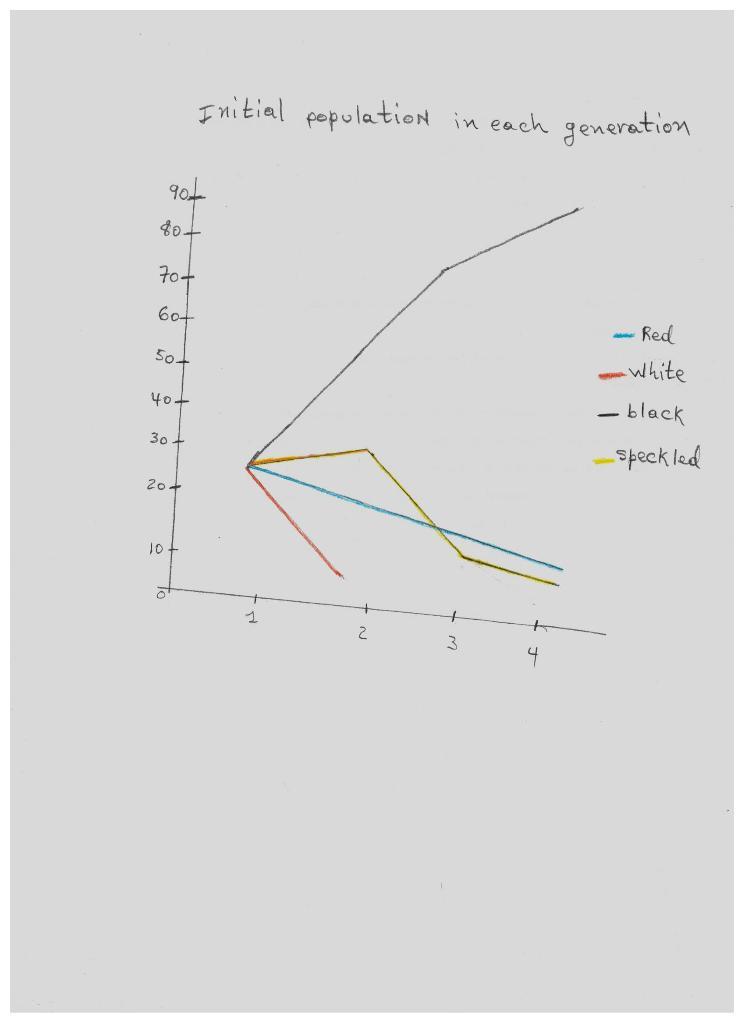Evolution occurs in a population of organisms when there is genetic change from one generation to the next. Evolution is genetic change over time. Realize
Evolution occurs in a population of organisms when there is genetic change from one generation to the next. Evolution is genetic change over time. Realize that evolution occurs in populations, not in individual organisms. Individuals stay the same genetically throughout their lives, populations can change. Within evolution we recognize micro-evolution and macro-evolution. Micro-evolution is change in allele frequencies over generations of a population of one species. It means that certain alleles, and therefore certain traits, become more (or less) abundant over generations. The species itself does not change, just one or more of its traits become more or less abundant within the population. For example, consider a population of a plant species with many red flowers and some blue flowers. Assume that over generations the population shows an increase in blue flowers and a decrease in red flowers. That change is considered micro-evolution. Macro-evolution is a real change in kinds of organisms, the appearance of new species. The accumulation of many micro-evolutionary events can lead to new species (gradual speciation). However, macro-evolution can also be the result of genetic changes that take place over a short amount of time. The more we learn about how genes work and interact, the more we begin to understand the many intricacies of the evolutionary process. See your textbook for more details on this. When we speak of or read about evolution, we in most cases are referring to macro-evolution (the appearance of new species, or speciation). Today’s lab is an illustration of micro-evolution.
Objectives Our goals for today are to become familiar with:
1. Terminology related to evolution
2. Aspects of the evolutionary process, in particular natural selection and micro evolution
The Exercise
1. Form groups of two students. Each group will manage an environment, or habitat, occupied by a species of rabbits that are preyed upon by hawks.
2. Many different environments are present on our earth. In this exercise, the environment is represented by the patch of cloth given to you by your instructor. Spread it out on the table.
3. The land is colonized by a single species of rabbits that is present in 4 different varieties. Count out 25 each of the four color varieties of beans and spread them out randomly over your environment. It is important to remember that the beans represent individuals of the same rabbit species. The different colors of the beans are different varieties of that species. Your four bean types do not represent four different species. Keep this in mind throughout the activity! Now look at your colonized environment. If predators like hawks were introduced which variety of rabbits do you think would do best, and why? This is your hypothesis: write down your hypothesis.
4. Predators, hawks, are introduced into the environment. Both students are going to be the predators. When you are told to begin, you will simultaneously begin "to hunt and eat". To do this, you need to turn your head away from the environment (or close your eyes), then look back and pick up the first bean you set eyes on. (So you cannot decide ahead of time which bean you will take. Also: don’t take beans with your eyes closed). Put the bean you picked in the "prey" dish. Continue hunting until each student, predator, has removed 25 rabbits. Stop hunting after a total of 50 beans have been removed.
5. Count how many beans of each type are remaining and record the information on the data table provided. These survivors are fruitful and multiply. For each bean that remains, add another bean of the same color to your population and record the number of beans and their colors of the new generation in your data table. Now return the population to the environment and spread them out randomly over the environment. (How many beans in total should you have now?)
6. Repeat the procedures of steps 4 and 5 three more times (hunt three more times), for a total of 4 new generations. Don't forget to record your data!
7. Finish the activity by making line graphs for your results (use the space below). Plot the initial numbers of each generation of the four varieties of rabbits. What is the unit of the X-axis? What is the unit of the Y-axis? Plot all four curves in the same graph.
8. Answer the questions below.
9. Each group will plot its graphs on the white board and make a brief presentation to the class.


- 1. Relate your experience back to your predictions. What happened? Was this different from your prediction? If so, explain why.
2. Describe how the concepts you investigated in the game apply to the real example.
3. Thinking back about the three forms of selection: directional selection, stabilizing selection and disruptive selection
a. Is this experiment an example of directional, stabilizing or disruptive selection?
b. How would you simulate the other two forms of selection using your bean populations?
4. Genetic drift, the founder effect, the bottleneck effect and gene flow.
a. How would you simulate the founder effect using your bean populations?
b. How would you simulate the bottleneck effect using your bean populations?
c. How would you simulate gene flow using your bean populations?
5. What would need to happen for macro-evolution to occur? How would you simulate that, using your bean populations?
Red White Black Speckled total 1st Initial 25 25 25 25 100 generation Remaining 10 3 24 13 50 2nd Initial 20 48 26 100 generation Remaining 8 36 50 3rd Initial 16 72 12 100 generation Remaining 5 4th 41 4 50 Initial 10 82 8 100 generation Remaining 2 47 50 00
Step by Step Solution
3.43 Rating (153 Votes )
There are 3 Steps involved in it
Step: 1
red white black speckled total 1st generation initial 25 25 25 25 100 rem...
See step-by-step solutions with expert insights and AI powered tools for academic success
Step: 2

Step: 3

Ace Your Homework with AI
Get the answers you need in no time with our AI-driven, step-by-step assistance
Get Started


